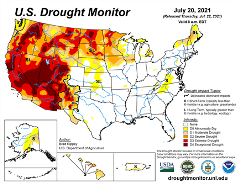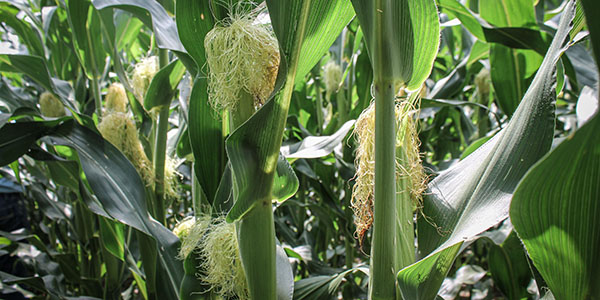AGRONOMICSUPPORT
YOU CAN TAKETO THE FIELD
Drought Stress During Corn Pollination
Here in the Upper Midwest and especially in the Dakotas we worry about drought and effects it has on our crops year in and year out. This year is no different with a significant area in Iowa, Minnesota and the Dakotas in the severe drought classification.
 It isn't rocket science -- we need water to raise a good crop. But let’s look a little closer at the effects of drought within a corn crop.
It isn't rocket science -- we need water to raise a good crop. But let’s look a little closer at the effects of drought within a corn crop.
Since most of the corn belt is at or near pollination stage, we will only cover from this point in the growing season to full maturity. At pollination, water is essential for silk development. With a lack of water and heat stress we will most likely be experiencing in the near-term judging by our forecast, we could see areas with delayed silk development as well as shorter silks in general. This can reduce the number of healthy silks resulting in poorer pollination. High temps (usually above 95 degrees Fahrenheit) during silking can also cause the silks to desiccate. Once a viable silk desiccates, its ability to catch pollen is lost. 100-degree Fahrenheit temps can kill pollen grain also resulting in poorer pollination and fewer kernels per ear.
There are areas that received ample rains prior to pollination, where the crops may have made it through that growth stage with very good pollination but are now facing a dryer and hotter forecast as we move into grain fill. If drought and heat stress continue during this stage, according to ISU Extension, we may see “premature death of tissue, shortened grain fill periods, increased lodging, fewer kernels and light kernel weight.” Most of the time we see this through tip back of the ear where kernels will abort near the tip of the ear depending on severity of stress and hybrid. Kernel development is impacted by the severity and timing of the stress occurring. The earlier the stress occurs, the more we’ll see the tip back kernel loss. The later it occurs from milk to dent stage, the more you’ll see premature black layer and lighter kernel weights.
To give you an idea on how much the drought stress will impact your yield, look at the table below from ISU extension. As you can see the biggest yield loss under stress is during the pollination to blister stage at an estimated three to nine bushel per day of stress.
Example corn yield loss estimates when stress occurs for four or more consecutive days. Adapted from Classen and Shaw, 1970; Rhoads and Bennet, 1990; and Shaw, 1988.
|
Corn Development Stage |
Estimated Yield Loss per Day of Stress |
|
Early vegetative (VE - V12) |
1 – 3 |
|
Late vegetative (V12 to VT) |
2 – 5 |
|
Pollination to Blister (R2) |
3 – 9 |
|
Milk (R3) |
3 – 6 |
|
Dough (R4) |
3 – 5 |
|
Dent (R5) |
2 – 4 |
|
Maturity (R6) |
0 |






Agronomist